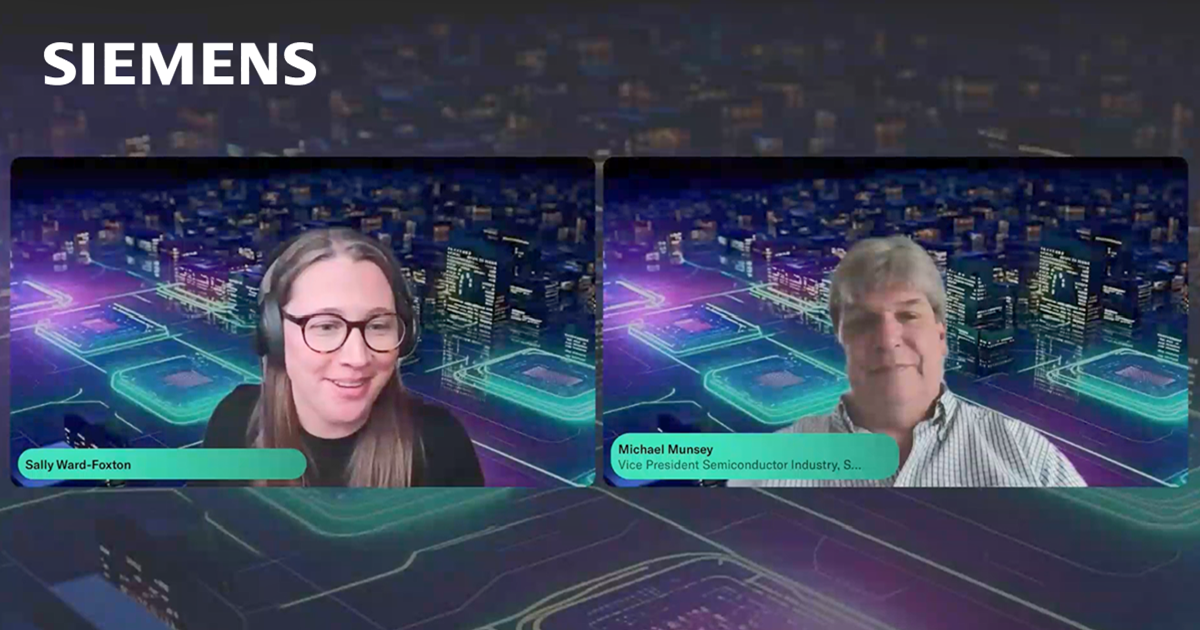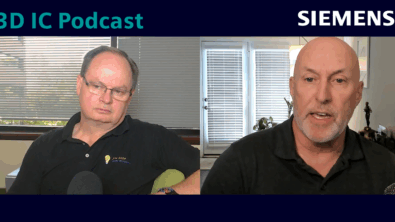EE Times Fireside chat: Linking design to manufacturing for a sustainable semiconductor future

Listen in as Michael Munsey, VP at Siemens EDA, joins EE Times’ Sally Ward-Foxton for a Fireside chat Q&A session to discuss semiconductor design and linking design to manufacturing for a sustainable semiconductor future.
Integrating systems for advanced design
Munsey’s role straddles the convergence of EDA and PLM, emphasizing the industry’s pivot from individual semiconductors to holistic systems within larger ecosystems. This interconnectedness necessitates the sharing of technologies and methodologies between traditional EDA tools and multi-physics simulations.
The way the industry’s going – when we look at the tools and the methodologies that we need – it’s starting to move from just talking about semiconductors to talking about entire systems.
Michael Munsey, VP at Siemens EDA
Driving forces behind chiplets and heterogeneous packaging
Moore’s Law forces us to explore beyond monolithic silicon, says Munsey. As systems become more advanced, there’s a dual push to not only enhance technologies but also manufacture sustainably. Munsey underlines that there’s a convergence of “pushing the state-of-the-art technology” with the pragmatic need for sustainable delivery.
Sustainability in semiconductor technology
Sustainability plays a key role across design, production, and throughout the device lifecycle. An example highlighted was Nvidia’s latest high-power-consuming chips, pointing towards the pressing need to power and cool them sustainably. Munsey also discussed advanced packaging methods capable of reducing power consumption, reinforcing the idea of creating devices that not only meet but exceed sustainable requirements.
Digital twins and sustainable fabs
The semiconductor industry has long relied on digital twins, but Munsey noted a thrust towards building digital twins of fabs to optimize design and predict early production issues. This comprehensive virtual modeling can lead to more efficient production, thus aligning manufacturing with sustainability goals.
Chiplets as a path to sustainability
Chiplets can directly contribute to sustainability by being smaller and easier to fabricate. Munsey touched on their potential for reusing older technologies and mixing diverse tech for better sustainability. Furthermore, with the SiGREEN initiative, Siemens has been focusing on reducing the carbon footprint of semiconductor manufacturing that heavily influences the production stage of electronics.
Advice for future engineers
Munsey emphasized “design for sustainability,” urging engineers to consider low-power designs and long-lasting products. He foresees an industry driven by software-defined products, where software drastically shapes hardware requirements and, hence, the overall product design.
The talk rounded off with audience Q&A touching on themes such as the challenge of securing detailed digital twins and the feasibility of sustaining dynamic blueprints for manufacturing in fabs. Munsey’s parting thoughts reflected the interconnectedness of sustainability and chiplet designs in shaping the future of semiconductor technology.
Dive in and watch the full 54-minute Fireside chat to delve deeper into Michael Munsey’s perspectives on the future of chip design and sustainability!
To learn more about Siemens EDA 3DIC solutions, visit the 3DIC Homepage
Learn more about Siemens’ unified cockpit for design planning, prototyping and predictive multi-physics analysis: Innovator3D IC


